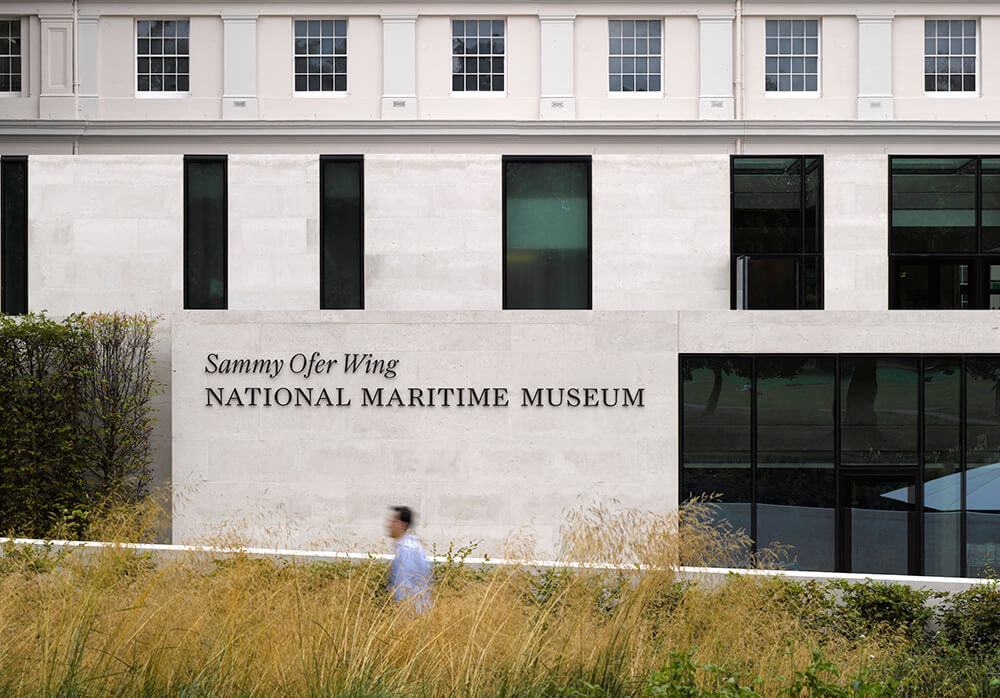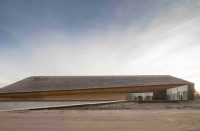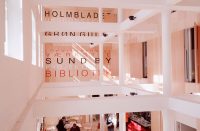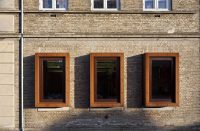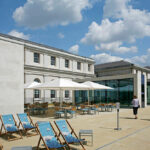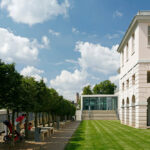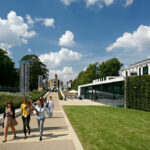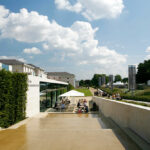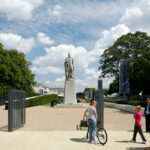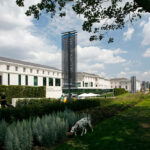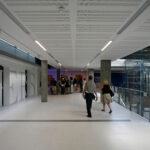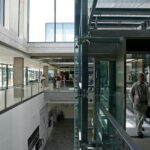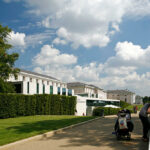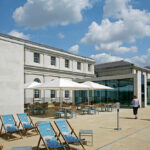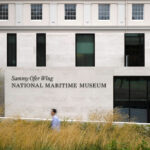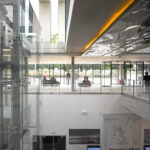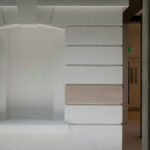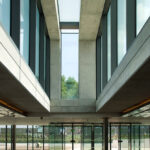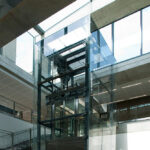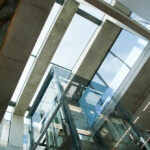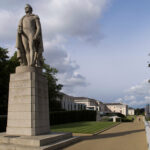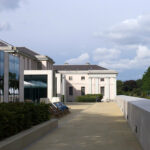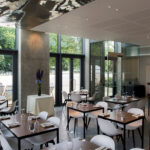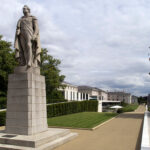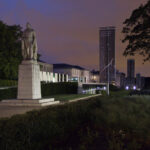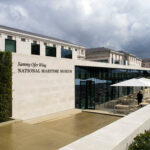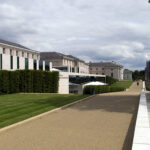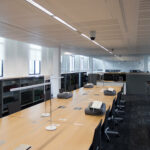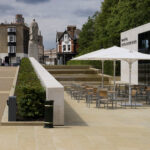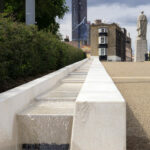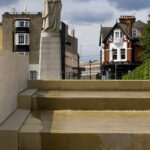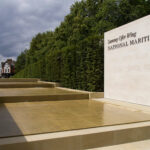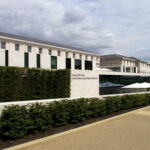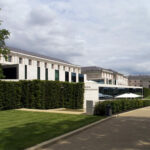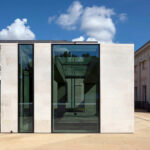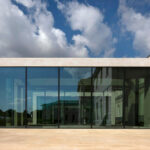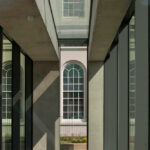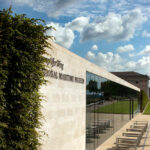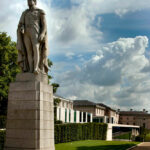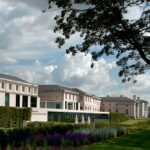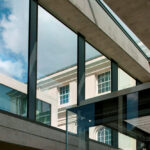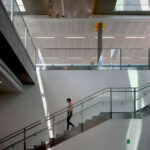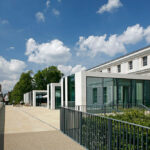Architect(s): C.F. Møller Architects
Address: Romney Rd, Greenwich, LONDON, United Kingdom
Latitude/Longitude: 51.48025951544292,-0.00555772368657669
Photographs: Benedict Luxmoore | Edmund Sumner | Julian Weyer | Morley von Sternberg
Opened on 14 July 2011, the £36.5M wing is the largest development in the National Maritime Museum’s history and a catalyst for the organisation to change completely the way it presents its galleries, exhibitions and visitor facilities. This major project has been made possible through a generous donation of £20M from international shipping magnate and philanthropist Sammy Ofer and an award of £5m from the Heritage Lottery Fund (HLF).
The project includes a special exhibitions gallery, allowing the Museum to stage a full programme of temporary shows; a permanent gallery, Voyagers, introducing the story of Britain and the sea; a restaurant and café with views over Greenwich Park; and a state-of-the-art library and archive bringing much of the Museum’s world-renowned archive on site for the first time.
The building gives the Museum a new main entrance from Greenwich Park, enhancing its connections with the park, the Royal Observatory, and the rest of the Maritime Greenwich World Heritage Site.
The new wing gives the Museum an opportunity to focus on the stories of adventure, discovery, tragedy, courage and disaster that make it distinctive, leaving visitors with a richer understanding of Britain’s maritime heritage.
Symbolic of this new approach, the Sammy Ofer Wing’s Voyagers gallery acts as an introduction to the extraordinary depth and range of the Museum’s collections. It combines over 200 objects, many of which have never been on display before, alongside cutting edge audio-visual installations.
A 30-metre long object wall tells stories of Britain and the sea from the sixteenth century to the twentieth. Sir Francis Drake’s sun jewel sits alongside the diary of a nineteenth-century whaler; the two hundred-year old love token of an engraved ship’s biscuit is displayed beside Nelson’s last letter to his daughter; and Tracey Edwards’ teddy bear takes its place with the toy pig that survived the sinking of RMS Titanic.
Illustrating the contemporary significance of Britain’s maritime histories and highlighting key themes from across the Museum, Voyagers is dominated by a dynamic, wave-like structure featuring bespoke video projections and a specially-designed soundscape. Intensely coloured patterns of images and text wash over its multi-faceted surface, creating a constant sense of movement and engagement. The personal stories of this island nation are featured in a series of video ‘portraits’ from people from all over the world – coastguards, émigrés, naval officers, schoolchildren – each telling their own story of the sea.
Different elements of the Sammy Ofer Wing interact to create new connections, and the collections displayed in Voyagers lead visitors towards the Reading Room and digital lounge. Here they can unlock the rich treasures of the Museum and discover the stories behind the great events of the maritime past. Iconic material from the archive and library collections includes Captain Cook’s handwritten journals and the log book of Robert Maynard, the man who killed Blackbeard. Shackleton’s personal copy of Browning’s poems, which he carried with him to the Arctic, is also held by the Museum, as is the log book of the slave ship captain, John Newton – writer of Amazing Grace.
The Museum has the world’s most important maritime archive, containing 100,000 books and nearly two miles (3.2km) of shelved manuscripts. Professional researchers, students, community groups and those exploring their family history will have unprecedented access to a vast range of journals, letters, records, charts, prints and drawings as the new wing enables key archives to be stored on the Greenwich site for the first time.
The new wing is the first step in the Museum’s plan to create a more coherent narrative for visitors which will enhance their understanding and enjoyment of the organisation’s unique cluster of historic venues. Over the next few years, a series of redeveloped permanent galleries will refresh the Museum’s key themes, appealing to a wider and more diverse audience, complemented by a schedule of major charging exhibitions and supported by an integrated learning and events programme.
Lord Sterling, Chairman of the National Maritime Museum said: ‘Our maritime story is Britain’s national story. And understanding the way the past has shaped the present never been more important in enriching our understanding of the world and providing inspiration for the future. In the Sammy Ofer Wing, our new exhibition space will introduce new generations of visitors to the many rich narratives bound up in our maritime story. This visionary transformation would not have been possible without the support of Sammy Ofer and the Heritage Lottery Fund.’
Kevin Fewster, National Maritime Museum Director said: ‘The Sammy Ofer Wing creates a spectacular contemporary environment in which more people can appreciate the wonders of our world-class collections and their stories of human endeavour and discovery. The opening of this new wing is only the start of our five-year programme to revitalise and refresh our permanent galleries and exhibitions. Through this, we will be able to transform the experience we offer to the two million visitors from Britain and overseas who visit us each year. It will help to ensure that current and future generations from all over the world understand the rich and complex story of these islands and the crucial role played by the sea in our history and the lives of those who depended upon it.’
Dame Jenny Abramsky, Chair of the Heritage Lottery Fund, said: ‘The National Maritime Museum’s spectacular archive now has a proper home thanks to the creation of the Sammy Ofer Wing. Packed full of priceless manuscripts and records of history’s great figures and moments in time, the building provides ample space to tell the story of Britain’s global influence through the sea, ships, time and stars. The Heritage Lottery Fund is proud to be a co-funder of this visionary project which complements our significant investment into many other elements of Greenwich’s World Heritage Site.’
1. The Sammy Ofer Wing provides 7,300m² of new floor space and returns 580m² of outdoor space to public use. It features four key elements:
– An 820 square metre special exhibitions gallery, allowing the Museum to stage a full programme of major temporary shows
– A state of the art library and archive complemented by digital resources
– New entrance through the park, enhancing the Museum’s connections with the rest of the Maritime Greenwich World Heritage Site
– A new café and brasserie featuring attractive terraces with views over Greenwich Park
2. The National Maritime Museum holds the world’s largest maritime collection. It is housed in historic buildings forming part of the Maritime Greenwich World Heritage Site. It incorporates the Royal Observatory, Greenwich, and 17th-century Queen’s House. The Museum works to illustrate for everyone the importance of the sea, ships, time and the stars and their relationship with people. The Museum welcomes over 2 million British and international visitors a year and is also a major centre of education and research.
3. Using money raised through the National Lottery, the Heritage Lottery Fund (HLF) sustains and transforms a wide range of heritage for present and future generations to take part in, learn from and enjoy. From museums, parks and historic places to archaeology, natural environment and cultural traditions, we invest in every part of our diverse heritage. HLF has supported more than 30,000 projects allocating £4.5 billion across the UK.
4. Sammy Ofer was an international shipping magnate and philanthropist. The shipping group which he founded operates a significant part of its fleet from London, with about 90 vessels flying the Red Ensign. After being based in Monaco for many years, he retired to Israelin 2009 where he died in June 2011. Born in Romania in 1922, Sammy Ofer moved as a child to Palestine, then under British Mandate. He entered the maritime world by joining his father’s ship chandlery business and during the Second World War served in the Royal Navy, in which he saw active service in the Mediterranean. Through his longstanding relationship with London and its shipping community Sammy Ofer gained a deep appreciation and respect for the long maritime tradition and history of the UK. A renowned philanthropist, Sammy Ofer gave over £40 million to assist education, medicine and medical treatment facilities: he was also a well known art lover and collector. In 2008 he was appointed an Honorary Knight Commander of the Order of the British Empire (KBE) in recognition of his support for maritime heritage.
Sammy Ofer Wing
The Sammy Ofer Wing was conceived and designed by the Denmark-based practice C.F. Møller Architects, following their selection in 2006 in a two stage international competition. Their concept sensitively combines a contemporary aesthetic for the new foyer and public spaces, with carefully restored elements of the existing museum. The scheme was completed by a team led by executive architect Purcell Miller Tritton and Churchman Landscape Architects.
The new wing doubles the volume of the existing south west wing of the museum and provides a range of new spaces for one of London’s best known museums. It occupies the site of the former Regatta Café and service yards, outside the south west wing, which was excavated to provide space for the project alongside the existing building. Due to the heritage sensitivity of the site, the bulk of the new construction is kept below ground, so that new wing becomes a combination of architecture and public landscape. The underground construction required significant work from structural engineers AKT and the building contractor, Lend Lease.
The interior of the existing Grade I listed south west wing of the Museum was substantially reconfigured to house the new archive and reading room. The building façade facing Greenwich Park was restored following the removal of the old Regatta Café and water tower.
The profile of the new extension has been kept low to allow the Grade I listed Victorian facade of the existing south west wing of the museum to be appreciated as a backdrop to the striking new building. The design sensitively combines a contemporary aesthetic for the new foyer and public spaces, with carefully restored elements of the existing museum. The interior of the south west wing was substantially reconfigured to house the new archive and reading room. The building facade was restored and a new roof installed.
The external spaces provide a threshold between the Baroque composition of Greenwich Park and the new wing. Collaborating with Churchman Landscape Architects the design team established a concept that looked beyond the immediate building footprint, proposing a new east-west pedestrian route to unify the grounds of the National Maritime Museum with Greenwich Park. These alterations create a new level of accessibility from the parkland, through the museum’s formally landscaped areas, to the new, crisply-detailed Sammy Ofer Wing. The design of the hard and soft elements of the landscape extend from the architecture. A green swathe of Greenwich Park sweeps up to and integrates the composition. Planes of lawn draw people down to the entrance doors, and tightly clipped hornbeam hedges edge the Portland clad ramps which lead up to the elevated terrace which overlooks the Park. The roof of the new wing is a public landscaped terrace overlooking the Park, and all levels are accessed by gentle ramps.
Features within the new building and landscape echo the Museum’s rich collections via architectural references, from the stepped cascade adjacent to the new entrance and the 160m long stepped rill, which runs alongside the entrance paths, to the selection of maritime species used in the planting.
The scheme was delivered by a team led by executive architect Purcell Miller Tritton (PMT). Malcolm Reading Consultants, who were retained by the museum as client representative from the outset of the project, built the delivery team to minimise risk and preserve exceptional architectural quality. PMT was joined by structural engineer AKT, services engineer Molt Macdonald Fulcrum, landscape architect Churchman Landscape Architects and cost consultant Turner & Townsend. Malcolm Reading Consultants also provided project management services for the construction phase and the museum fit-out.
Malcolm Reading, chairman of Malcolm Reading Consultants said: ‘This was an exceptional project which was delivered through teamwork and a very good relationship with the museum. Early and extensive work with Greenwich Council and English Heritage during design development secured successful permissions ahead of time. Then, by using a two-stage design and procurement process with the contractor, Lend Lease, we were able to knock months off the original schedule and secure better value.’
Mark Hammond, Partner, Purcell Miller Tritton Architects, comments: ‘Purcell Miller Tritton was very proud to lead the design team in delivering the Sammy Ofer Wing. Since our appointment in 2008, the project has placed great demands on the team to ensure delivery in 2011. The resulting building is nothing short of spectacular and is a great testament to the vision of the commissioning client and his representative, the endeavours of the professional team and the construction contractors.’
Teva Hesse, Head of the London Branch of C.F. Møller Architects, comments: ‘It was a great honour for C.F. Møller Architects to design the new Sammy Ofer Wing within the sensitive and exceptional setting of Maritime Greenwich. In a limited space the project provides a great range of public amenities, museum facilities and visitor experiences. Most importantly, the architecture and landscape merge into a composition that seamlessly integrates the National Maritime Museum with Greenwich Park.’
Text description provided by the architects.
Engineering: Adams Kara Taylor, Fulcrum Consulting
Design architects: C.F. Møller Architects
Executive architects: Purcell
Landscape: Churchman Landscape Architects
Planning consultants: Nathanial Lichfield and Partners
Acoustic consultant: Sandy Brown Associates
Contributed by C.F. Møller Architects

